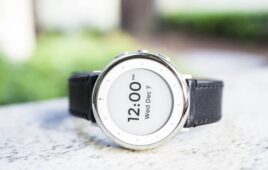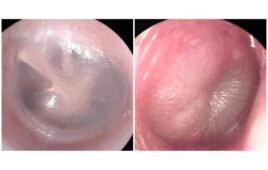What is the most effective way for parents to soothe their crying babies? A combination of sensory stimuli – by way of swaddling, sound and movement – can help, according to a new study by SEIN, the expertise centre for epilepsy and sleep medicine, and the University of Amsterdam (UvA). The researchers discovered an immediate calming response irrespective of whether the infant was soothed by its parent or a ‘smart crib.” The results were published on 24 April in the open access journal PLOS ONE.
A frequently crying infant can have a major impact on both the infant itself and its parents. Parents of excessively crying infants are often exhausted and experience symptoms of depression. Excessive crying is even associated with infant hospitalisation and shaken baby syndrome. There are, however, no proven effective prompt soothing methods for excessively crying infants under the age of 6 months. Child development experts Eline Möller, Wieke de Vente and Roos Rodenburg from SEIN and the UvA wanted to change this. They therefore investigated whether the combination of swaddling (wrapping the baby in a swaddle sack), sound (shushing) and movement (swinging) induce a spontaneous calming response when parents soothe their baby or when a ‘smart crib’ soothes the baby. They also examined whether the age of the baby influences the calming response.
Experiment in the Family Lab
To do so, Möller, De Vente and Rodenburg looked at 69 babies aged 0 to 6 months. Each baby and one of its parents came to the UvA Family Lab. The researchers did a so-called counterbalanced experiment that consisted of two conditions: the parent and the smart crib. Each of the two conditions involved three two-minute phases: baseline (to be able to determine the baseline value), laying on the back, and soothing. Möller explains: “During the baseline the baby sat on the parent’s lap. We then induced fussiness by putting the baby on the back, followed by parental soothing – the parent shushed and rocked the swaddled baby. We went through the same phases with the smart crib as a comforter. The smart crib also swings the baby and also makes a shushing sound.” The researchers recorded the level of fussiness in the babies through observation; the baby’s heart rate and heart rate variability were also measured to record physiological fussiness. If, while soothing the baby, the observed fussiness and heart rate decrease and the heart rate variability increases (compared to lying on the back), the infant reacts with a calming response.
Baby responds with calming response
Fussiness and the baby’s heart rate were lower in both soothing phases, thus irrespective of whether the parent or the crib did the soothing, than in the previous phase in which the baby was laying on its back. This indicates that in both conditions the babies responded with a calming response to swaddling, movement, and sound. The baby’s heart rate variability was higher during parental soothing than in the back phase, but during soothing by the smart crib the heart rate variability did not differ significantly from the back phase. Younger babies responded with a stronger calming response than older babies when they were soothed by the parent. This difference was not visible with the smart crib. “As for the baby’s heart rate, we saw that the calming response was stronger during mechanical soothing (the smart crib) than during parental soothing. We saw the opposite when it comes to the observed fussiness: the calming response was stronger with parental soothing than with mechanical soothing,” says Möller.
“It isn’t clear whether the parent or the crib is more effective for soothing babies, but that is actually not so relevant,” Möller adds. “It isn’t either the parent or the crib. Babies naturally need human contact for comfort. The crib could be an addition to all the good things that parents themselves are doing to soothe their baby.” The crib might be a solution especially for parents with a crying infant. Sometimes they become so exhausted that they react less sensitively and responsively to their baby, which can result in a vicious circle in which the parent and the baby increasingly bring each other out of balance: more crying by the baby and even more exhaustion in the parent. A smart crib could then offer a solution. If the infant starts to cry less and sleep better, this might also benefit the parent’s sleep. In this way, the negative vicious circle can perhaps be broken. Smart cribs might also offer a solution in hospitals and relieve staff.
Follow-up research
“It is important to note that our study took place in a controlled environment—our lab,” says Möller. “It is now important to do follow-up research into the soothing effects of swaddling, movement, and sound by the parent and a smart crib in the home environment to see if our results can be confirmed.” Möller and Rodenburg are already doing small-scale research in which a smart crib is placed at parents’ home. The results are promising: babies and parents sleep meaningfully better and crying also decreases significantly. “Parents are often so satisfied with the crib, that they even ask if they can use it a bit longer.”




